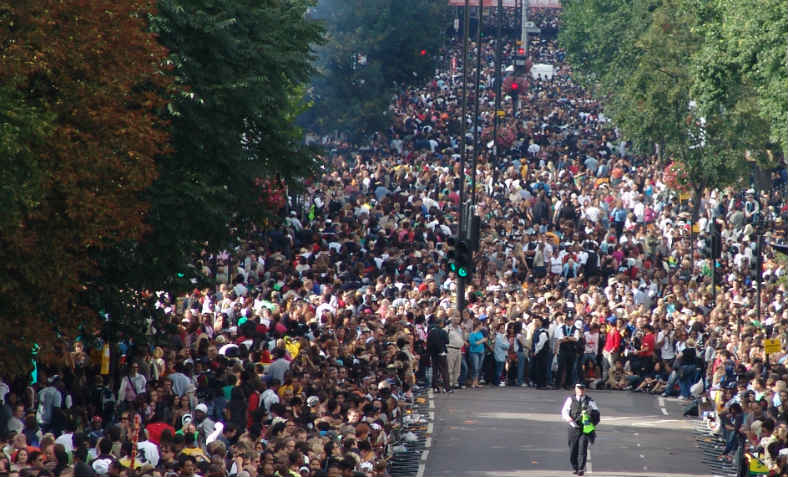 Emerging race and class unity in post-Grenfell London. Photo: Bryce Edwards, Flickr/wikimedia
Emerging race and class unity in post-Grenfell London. Photo: Bryce Edwards, Flickr/wikimedia
The emergence of a united, multiracial working class has the power to deliver justice for Grenfell and get rid of the Tories, writes Tom Whittaker
The protests both outside and inside Kensington Town Hall last Friday were remarkable, and arguably unprecedented for the degree of unity that they demonstrated across Britain’s black, Muslim, Arab and white communities.
Notting Hill was of course where the long struggle of the Windrush Generation began. In the face of race riots in 1958 and the racist murder of Kelso Cochrane, an Antiguan carpenter, a year later, the black residents of Notting Hill defended themselves.
Claudia Jones, a communist activist originally from Trinidad and then resident in Ladbroke Grove, had the inspired idea of establishing a Caribbean carnival as both a cultural celebration and political statement of interracial unity. It first took place in 1964.
For forty years, from the Notting Hill race riots through to the death of Stephen Lawrence, black Britons participated in and led a number of big anti-racist struggles and campaigns. However, following the election of New Labour in 1997 and the publication of the Macpherson report in 1999, there was a period of relative quiet.
Racism towards black people, particularly institutional racism, had not gone away but the campaigns were not on the same scale as in earlier decades, a situation that did not really begin to change until the death of Mark Duggan and the subsequent riots of summer 2011.
For Britain’s Muslims the timescale of politicisation and resistance was slightly different.
During the late 1970s and early 1980s there had been a number of Asian youth movements which opposed the National Front and other racist groups. Centred on places such as Southall, Bradford and East London, these movements took place alongside, if still largely separate from, the larger black struggles of that time.
In 2001 however, British Muslims were thrust decisively centre stage of UK anti-racism.
That year had already seen large scale rioting in Oldham, Burnley and Bradford as Asian people (mostly Muslim) defended themselves from far right provocation and the police. Then came 9/11 and the War on Terror.
The next decade, albeit with ebbs and flows, saw a flowering of Muslim political participation against the Iraq War and the anti-terror legislation that accompanied it, and also for Palestine.
However, there were occasions which showed that oppression can divide people as well as unite them. For instance, there were violent clashes in the Birmingham area of Lozells in 2005 between the city’s African-Caribbean and Asian communities. Further violence was narrowly averted in 2011 after three Asian men in Birmingham were hit by a car and killed during the riots of that year.
So the inspiring scenes of unity we have seen in the last week are not automatic and haven’t always been present. And what of the white members of the working class present in the Grenfell protests? Between 2001 and 2015 increased numbers of white people voted for racist parties such as the BNP or UKIP. For some working class voters, this, at least partly, reflected frustration with their economic circumstances and the lack of an alternative, New Labour having abandoned class politics when Blair became leader back in 1994.
However, Jeremy Corbyn has just delivered the largest and most class conscious vote for Labour since 1945. In many cases former UKIP votes were won to Labour, a class vote to invest in hospitals and schools proving more appealing than racism to migrants.
It feels that we have reached a turning point and that the last few weeks have seen the return of class politics in a way not seen since the miners’ strike. But Grenfell reminds us of the need continually to assess how race and class intersect if we as a movement are to fully realise the radical potential of this moment.
Undoubtedly, a powerful, multiracial working class has the power to both deliver justice for the Grenfell residents and to get rid of this Tory government.

